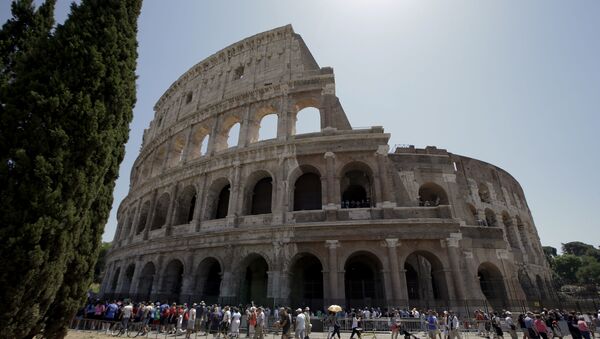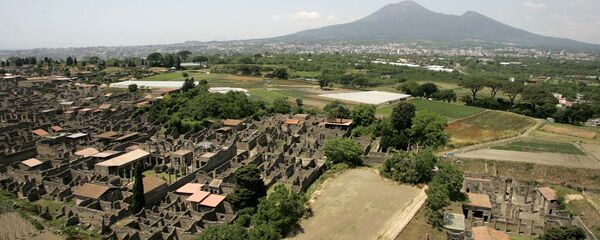While scientists are engaged in designing real-world “invisibility cloaks” thanks to a special class of high-tech man-made “metamaterials”, a team of French researchers has suggested on arXiv, a collection of natural scientific preprints that some specific ancient structures, like the landmark Roman Colosseum, are remarkable for their similar architectural patterns, which, they assumed, might have protected them from earthquake damage ever since the world’s largest amphitheatre was erected in 70-80 AD.
Classified as a type of so-called photonic band gap materials, “a metamaterial” is technically speaking one whose inner structure can bend light in ways that are not typical, or stated otherwise, with an untypical index of refraction. What is understood by the latter is the ratio between the speed of light in a vacuum and the speed with which the upper part of the light wave penetrates space.
While natural materials are estimated to have a positive index of refraction, certain man-made metamaterials, which first saw the light of day in the early 2000s, have a negative index of refraction, which means that light is bent around even very sharp angles, making such materials ideal for cloaking something.
READ MORE: Millenia-Old Tomb Built Using BURIAL OILS Found in Egyptian Necropolis
Unlike invisibility cloaks in fantasy stories, metamaterials do exist in reality —or at least in laboratories — also being ideal for making so-called “super lenses” to better analyse small-scale objects. For the time being, such promising materials are basically limited to specific wavelengths: microwaves for example, or infrared light, as well as certain frequencies of sound waves.
However, most astonishingly, the principle can be used for seismic activity control: by redirecting so-called shallow Rayleigh waves that typically inflict the worst structural damage, metamaterials may make it possible to minimise the damages earthquakes and other natural disasters inflict on infrastructure.
"The idea is to surround a building with a lattice of holes or solid objects within the soil. When seismic waves within a certain range of wavelengths pass through the lattice, multiple reflections in the lattice interfere with one another destructively to create a band gap that results in a significant reduction in the shaking of the building," Physics World reported describing the project.
Several years ago, Lyon-based research co-author, civil engineer Stephane Brule and his Marseille colleagues demonstrated how large-scale acoustic and seismic cloaking can happen.
They drilled a lattice of boreholes into the earth to find that sound waves reflected most of their energy backwards, toward the source when they encountered the first two rows of holes. Brule subsequently noticed a similar structural pattern while holidaying in Autun, in Central France, after taking a look at an aerial picture of the semi-circular shape of a Gallo-Roman theatre buried underneath a field, which, he revealed, repeated those of other amphitheatres from the same epoch.
According to the French researcher, Roman engineers didn’t follow the pattern purposefully, but may have noticed over time that such an architectural solution (in terms of shape) meant that the buildings were more resistant to natural cataclysms. "Rigorously, we cannot say more for the moment", he explained to Physics World.





